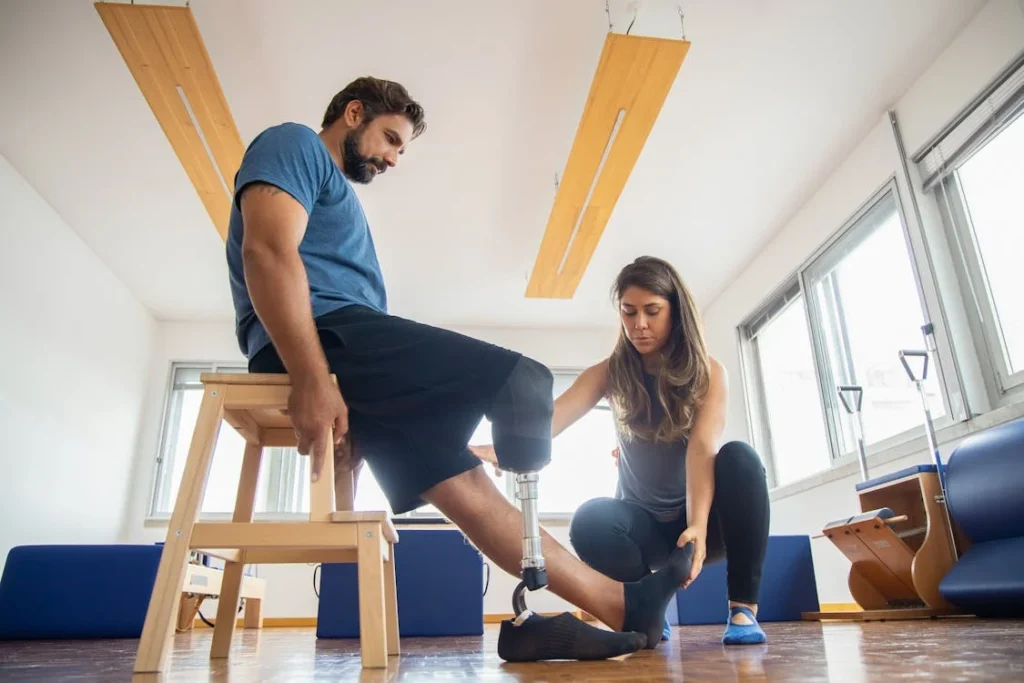Losing a limb is life-changing. But what often surprises many people is that getting a prosthetic limb doesn’t begin with picking the right device. It starts much earlier — with something called pre-prosthetic therapy.
This is a crucial part of recovery that happens before you ever wear a prosthetic. It’s the time where your body and mind are both prepared to adapt to something new. Without it, even the best prosthetic might feel uncomfortable, hard to control, or even frustrating.
Pre-prosthetic therapy is more than just exercises or rehab. It’s about helping you feel stronger, more confident, and ready — physically and emotionally — for your next step.
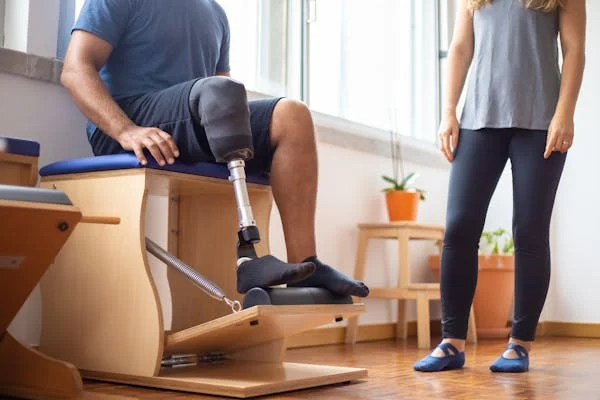
Understanding Pre-Prosthetic Therapy
What Is Pre-Prosthetic Therapy, Really?
Pre-prosthetic therapy is the care and training you receive after an amputation but before getting a prosthetic limb. Think of it like preparing the ground before planting a seed. If the ground is not ready, the seed won’t grow well.
Similarly, if your body is not ready, a prosthetic won’t feel right — and you might not use it as much as you could.
During this stage, therapists work with you to heal your wound, reduce swelling, manage pain, and help your body adjust to a new way of moving.
This therapy also helps shape the remaining part of your limb (called a residual limb) so it can fit well into a prosthetic socket later.
But it’s not just physical. Pre-prosthetic therapy also helps with emotional healing. Losing a limb can be overwhelming. It’s natural to feel fear, confusion, or sadness.
This stage gives you space to understand what’s happened and rebuild confidence in your own strength.
Why the Body Needs Time to Heal First
Your body goes through a lot during surgery. Muscles are cut. Bones may be shortened. Skin and nerves are affected. Everything needs time to heal — not just the outside, but deep inside too.
Jumping straight into prosthetic use without giving the body time to recover can lead to poor fit, skin breakdown, and a lot of discomfort.
Pre-prosthetic therapy gives your body the time and support it needs. It makes sure that when you’re ready to wear a prosthetic, your limb is strong, flexible, and shaped the right way to handle it.
For example, without proper shaping, a residual limb might swell or have uneven pressure points. This can cause pain when using a prosthetic.
But with therapy, you learn how to wrap your limb correctly, how to keep the skin healthy, and how to build muscle strength that supports better movement later.
The Role of the Therapist in Your Recovery
One of the most important people during pre-prosthetic therapy is your therapist — usually a physical therapist or occupational therapist trained in working with people who’ve had amputations. They are your guide through this stage.
They don’t just give you exercises. They help you:
- Learn how to sit, lie down, and move safely.
- Train your muscles to be strong and steady.
- Keep your joints flexible, so they don’t get stiff.
- Manage your pain, especially phantom limb pain, which many people experience.
But more than that, they listen. They understand your fears. They answer your questions. They work at your pace — not too fast, not too slow — to help you feel like you’re in control again.
What Happens During Pre-Prosthetic Therapy
Every person’s journey is different, but most pre-prosthetic therapy programs include similar steps. At first, you’ll focus on healing and rest.
After surgery, your care team will check for infection, make sure your wound is healing properly, and help you manage swelling and pain.
Once the wound starts healing, therapy becomes more active. You’ll start working on balance, posture, and gentle movements.
You’ll practice using your upper body or your remaining limb to move around more easily. You may also learn how to use assistive devices like crutches, walkers, or wheelchairs.
Your therapist might teach you:
- How to wrap your limb to help shape it.
- How to care for your skin and spot signs of infection.
- How to stretch and move in ways that keep your body flexible and strong.
By the end of this phase, you should be feeling more confident in your daily activities — even without a prosthetic. That’s the goal: to build a strong base so that when you do get your prosthetic, you’re ready to use it well.
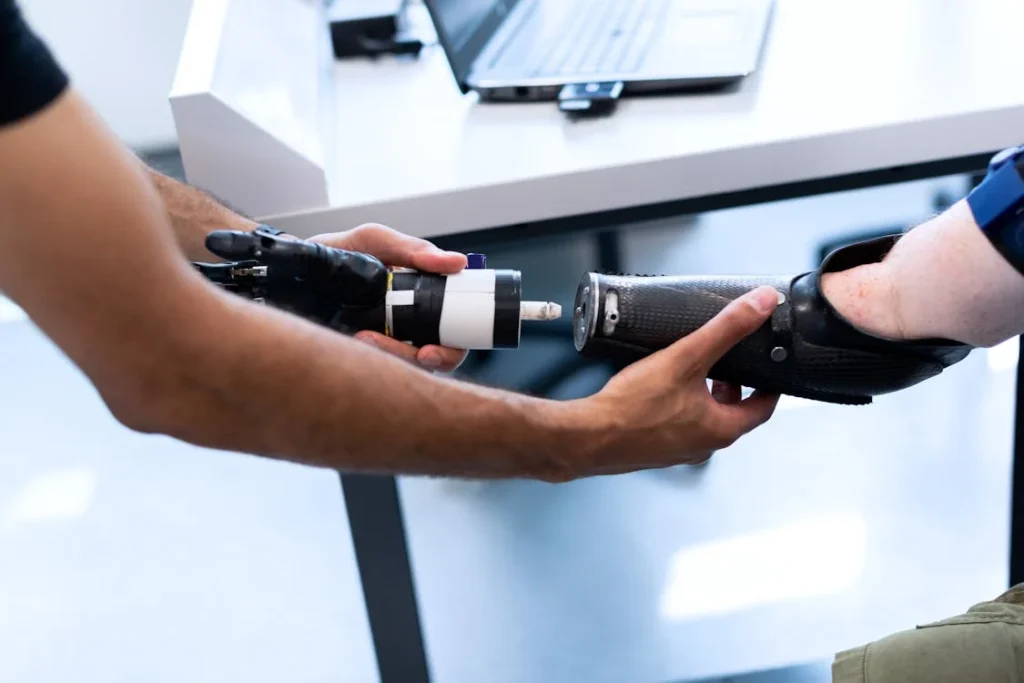
Why Pre-Prosthetic Therapy Is a Game-Changer
It Builds a Strong Foundation for Prosthetic Success
Getting a prosthetic is not like buying a pair of shoes. You can’t just wear it and walk out the door. Your body has to work with the prosthetic — not against it. That’s what pre-prosthetic therapy prepares you for.
When your muscles are strong, your joints are flexible, and your limb is shaped properly, a prosthetic becomes a natural extension of your body. It feels better. You move better. You use it more. And most importantly, you reduce the risk of injury or discomfort.
Many people don’t realize how important this foundation is. Without it, even the most advanced prosthetic might feel clunky or painful. Pre-prosthetic therapy helps ensure your first experience with a prosthetic is positive — and that’s a big step toward long-term success.
It Prevents Common Complications
Let’s be honest — recovery after amputation can be tough. But skipping or rushing through the pre-prosthetic phase often makes it harder. People who skip therapy may experience tight muscles, joint contractures (where joints become stiff and hard to move), poor balance, or even falls.
Another common issue is phantom limb pain — when you feel pain or sensations in the part of the limb that’s no longer there. Pre-prosthetic therapy doesn’t make this go away completely for everyone, but it often helps reduce it.
Through movement, massage, and mirror therapy, therapists can teach you ways to retrain your brain and calm nerve signals.
Therapists also help you prevent skin problems. After amputation, the skin around your residual limb can become sensitive, dry, or irritated. If it’s not taken care of properly, it can break down, which makes wearing a prosthetic very difficult.
Pre-prosthetic therapy includes teaching you skin care habits that help keep your limb healthy and strong.
It Improves Emotional Recovery Too
Healing isn’t just about the body. It’s about the mind too. After an amputation, it’s normal to feel a wide range of emotions — fear, sadness, frustration, and sometimes even anger. You might worry about your independence, your job, your relationships, or just day-to-day activities.
Pre-prosthetic therapy gives you time to adjust emotionally. When you work with a caring therapist and start to see small wins — like sitting up straight again or walking with a walker — your confidence starts to grow. You start to believe in yourself again.
Therapists often act as emotional anchors during this time. They understand what you’re going through. They’ve helped others on this journey and they can help you too. They celebrate your progress, no matter how small, and they remind you that you’re moving forward.
Many programs also include support from counselors, peer mentors, or support groups. Talking to someone who’s been through it can make a world of difference. You realize you’re not alone. And that makes recovery feel more possible.
It Teaches You to Move Again — Safely and Confidently
After an amputation, even basic movements can feel strange. Getting out of bed, standing up, turning, or reaching for something might feel unsteady at first. You might be afraid of falling or hurting yourself.
Pre-prosthetic therapy helps you relearn these movements in a safe, controlled way. You don’t jump straight into walking or running. Instead, you begin with sitting balance, posture, core strength, and gentle movements.
You build a strong trunk — the center of your body — so you can stay upright and balanced when you start using a prosthetic later.
You also learn how to use your remaining limb, or upper body, to compensate during daily activities. If you’ve had a lower limb amputation, you’ll get training on how to shift your weight safely, use mobility aids, and prevent overuse injuries on your sound limb.
All of this matters because moving well without a prosthetic prepares you to move even better with one. You become stronger, more stable, and less afraid to try new things.
It Helps You Set Realistic Goals for the Future
One powerful part of pre-prosthetic therapy is that it helps you plan your journey — not just for today, but for tomorrow and beyond. With your therapist, you’ll set small, realistic goals.
Maybe it’s being able to stand on your own. Or get dressed by yourself. Or walk a few steps with a walker.
Each goal you reach builds momentum. And your care team helps guide you toward the next steps — including what kind of prosthetic might be best for you, what kind of training you’ll need, and how long your recovery might take.
This planning reduces anxiety. It gives you a road map. And even though every journey is different, knowing you have a direction makes it easier to move forward.
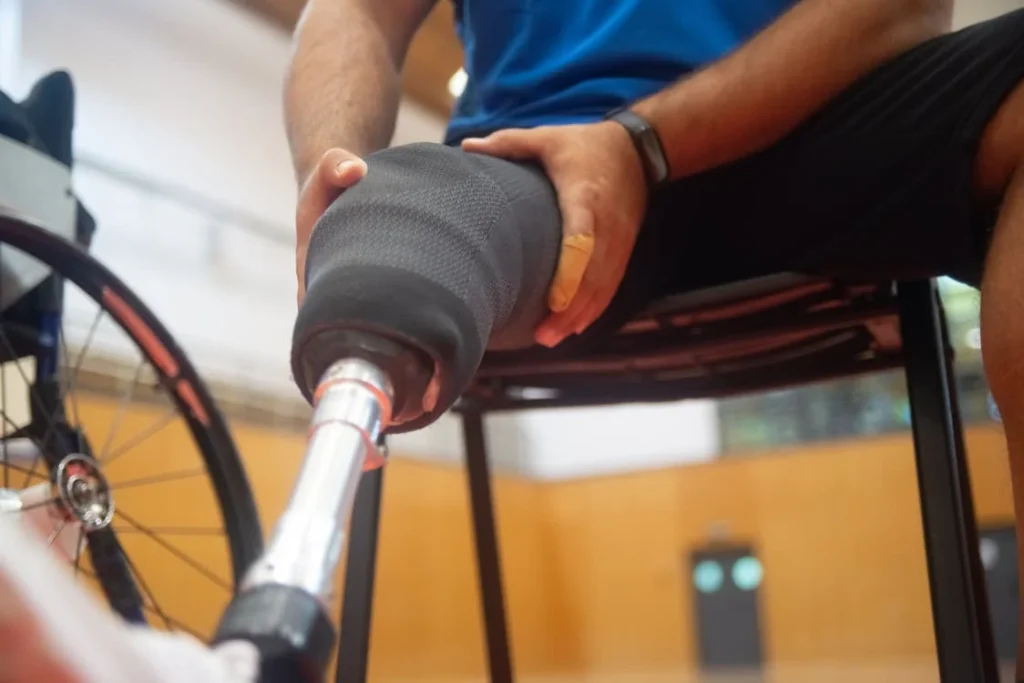
What Pre-Prosthetic Therapy Looks Like Day by Day
The Early Days: Rest, Healing, and Gentle Movements
Right after surgery, everything feels new. Your body is trying to heal, and your mind is trying to keep up. In these early days, the main goal is to protect your residual limb and start the healing process without adding pressure or strain.
You’ll likely begin therapy while still in the hospital or rehabilitation center. At this stage, therapists will help you learn simple things — how to get in and out of bed safely, how to sit upright without falling over, how to move your other limbs without twisting your body in unsafe ways.
Even breathing exercises can be part of this phase, helping you stay calm and reduce tension in your body.
You’ll also begin with something called positioning. This helps prevent tight muscles or joints that might otherwise get stuck in the wrong position.
Therapists will show you how to place your limb in ways that encourage natural movement later on. Small pillows or foam pads might be used to keep your hips or knees from getting too stiff.
It might not feel like progress, but it is. Every gentle movement, every stretch, every minute sitting upright — it’s all getting your body ready for what’s next.
Mid-Phase: Muscle Strength, Limb Shaping, and Balance
Once your wound is healing well and you’ve regained some energy, therapy shifts into a more active phase. Now the focus turns to building strength and preparing your residual limb to fit comfortably into a prosthetic.
Your therapist may guide you through gentle resistance exercises that wake up the muscles around your limb. These muscles help hold your prosthetic in place later, so the stronger they are, the better. You’ll also work on your core — the muscles around your stomach and back — because they help with posture and balance.
This is also the time when limb shaping becomes important. Your therapist will teach you how to wrap your limb using elastic bandages or a shrinker sock.
This helps reduce swelling and gives the limb a smooth, round shape that fits better into a prosthetic socket. You might feel unsure at first, but your therapist will practice with you until you can do it yourself.
Balance training becomes a big focus here too. If you’ve lost a leg, standing and walking will feel very different. Even sitting might take some effort at first.
Therapists use parallel bars, mirrors, or soft pads to help you get used to shifting your weight again, one movement at a time.
Every new skill adds up. What once felt difficult starts to feel normal. That’s the power of daily practice and encouragement.
Late Phase: Independence, Mobility, and Preparing for a Prosthetic
As your body continues to heal and strengthen, therapy begins to focus more on independence. The goal now is to get you moving confidently in your daily life — without needing constant support.
You’ll learn how to dress, bathe, cook, or move around your home safely. You’ll practice using any assistive tools you may need, like walkers or crutches.
If your dominant hand was affected, you’ll explore new ways to write, eat, or type using your other hand. If it was your leg, you’ll train to get in and out of chairs or climb stairs without losing your balance.
Therapists may start working with you on trial prosthetics or training devices. This helps you understand what it feels like to wear a prosthetic — the weight, the movement, the way it connects to your body.
You’ll learn how to put it on and take it off, how to care for it, and what kind of daily routine you might expect once you have your final prosthetic.
This phase often includes emotional support too. You may be asked to visualize your life with a prosthetic, to think about your goals, and to talk about any fears you still carry.
Therapists and counselors help you face these emotions with strength and clarity, so you step into the next chapter feeling confident and prepared.
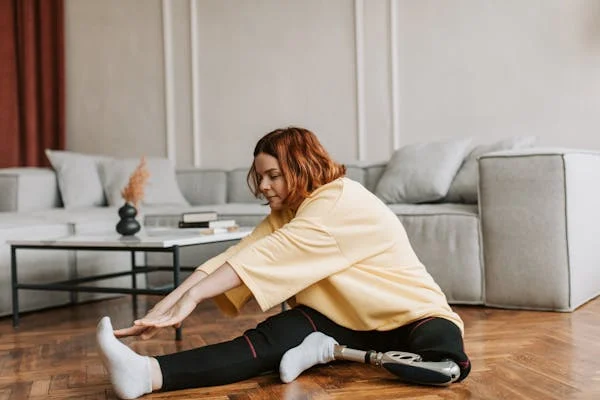
Support Systems That Make Recovery Smoother
The Role of Caregivers in Pre-Prosthetic Therapy
Recovery isn’t something anyone does alone. Behind most successful recoveries, there’s a caregiver — a family member, a friend, or sometimes even a nurse — who’s there day after day.
While the therapist helps guide your movements, it’s often the caregiver who helps you practice them at home.
Caregivers provide both physical help and emotional support. They assist with wrapping the residual limb, reminding you to do exercises, or helping you move safely from one place to another.
They also provide encouragement on the tough days, when progress feels slow or when doubt creeps in.
But caregivers need support too. They’re learning along with you. That’s why many rehabilitation programs now include caregiver education. It teaches them how to help without doing too much for you.
It also helps them understand your emotional journey — so they can respond with empathy and not frustration.
When caregivers are involved and informed, recovery is more consistent, safer, and often faster. They help build a daily routine around therapy and healing. That structure can make a big difference.
How Rehabilitation Clinics Make a Difference
A good rehabilitation clinic does more than provide physical therapy. It becomes a space of hope, learning, and transformation. Clinics that specialize in limb loss recovery understand the challenges you’re facing — not just the medical ones, but the emotional and practical ones too.
At Robobionics, for example, we partner with expert rehab clinics like Omnify Prosthetics that provide comprehensive care from the start. Their teams are trained to work with a wide variety of cases and always tailor the therapy to the individual — because no two people recover in exactly the same way.
These clinics offer structured therapy programs, ongoing evaluations, and even home-based training for patients who can’t visit regularly.
Many of them use digital tools and games that help make therapy more engaging and motivating. This mix of in-person care and technology gives patients flexibility while keeping the therapy effective.
The Importance of a Multi-Disciplinary Team
When you’re going through something as complex as limb loss recovery, it’s not enough to rely on one expert. That’s why most successful programs use a multi-disciplinary team. This team might include:
- A surgeon who performs the amputation and monitors healing.
- A physical or occupational therapist who leads your movement training.
- A prosthetist who eventually designs and fits your prosthetic limb.
- A psychologist or counselor who supports your mental well-being.
- A nurse or caregiver coordinator who helps with daily medical needs.
Each of these professionals sees your recovery from a different angle. Together, they build a plan that covers everything you need. They also communicate with each other to make sure your care stays consistent.
When all parts of the team are working together, you feel more supported. You don’t have to explain your story again and again. You don’t feel lost or rushed. You feel like you’re moving forward with purpose.
Technology Is Making Therapy More Personalized
One of the most exciting changes in pre-prosthetic care is how technology is improving therapy. At Robobionics, we use gamified rehabilitation tools that make therapy feel more like a game than a chore. These tools track your progress in real time, so you can see your improvements each day.
For example, let’s say you’re working on upper body movement. A simple interactive game could help you reach, bend, or balance, all while following a fun challenge on screen. Over time, your movements get smoother and stronger — and it doesn’t feel like hard work.
This kind of feedback motivates people to keep going. And because it’s fun, people are more likely to practice regularly, which makes recovery faster.
Some clinics also use video monitoring for at-home sessions. This means you can get professional feedback even if you can’t visit every day. It brings expert care to your doorstep.
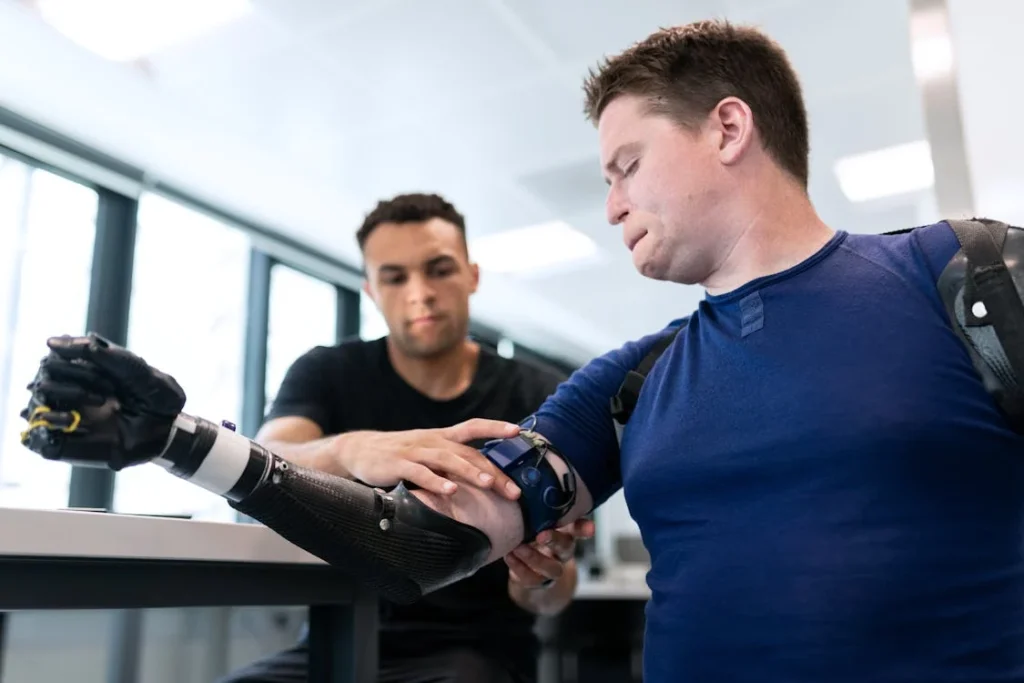
What Comes After Pre-Prosthetic Therapy?
Getting Ready for Prosthetic Fitting
Once you’ve completed pre-prosthetic therapy and your limb has healed and taken on a proper shape, the next big step is prosthetic fitting. But this isn’t just about getting a device. It’s about matching the prosthetic to you — your lifestyle, your goals, and your body.
Thanks to everything you’ve learned and practiced during pre-prosthetic therapy, you’re already ahead. Your muscles are stronger, your limb is shaped correctly, and you’ve learned how to move safely and confidently. This makes the fitting process smoother, more accurate, and less stressful.
During your fitting, a prosthetist — a specialist in prosthetic limbs — will take measurements and work with you to find the right kind of socket, alignment, and component options. They’ll also check how your skin responds to pressure and movement. If you’ve done the therapy, your limb will usually handle this step much better.
You’ll also start learning how to wear the prosthetic — how to put it on and off, how to walk or move with it, and how to keep it clean. These are new skills, and they take time. But because you’ve already been through therapy, your body and mind are prepared to learn.
The First Steps with a Prosthetic
Those first steps with a prosthetic are powerful. They mark a turning point in your journey. But they also come with new challenges — and this is where your foundation in therapy really matters.
At first, the prosthetic might feel strange. It might be heavy or tight. You may need help with balance or walking. This is completely normal. Your physical therapist will now shift focus to prosthetic gait training — which means helping you learn to walk naturally and comfortably with your device.
Because of your earlier therapy, you’ll likely adjust more quickly. You already know how to engage your core, how to shift your weight safely, and how to stay balanced. This makes your progress smoother and reduces the chance of falls or injuries.
You’ll practice in a variety of settings — smooth floors, uneven surfaces, maybe even stairs or ramps. Your therapist may use mirrors, videos, or feedback tools to help you see and improve your movement. With each step, you’ll grow more confident and independent.
Life After Recovery: Setting New Goals
The journey doesn’t stop after you start using a prosthetic. In fact, many people say it’s just the beginning. Once you’ve regained some independence, you’ll likely start thinking about the bigger picture. Can I go back to work? Can I travel? Can I play with my kids the way I used to?
These questions matter. And the skills you built during pre-prosthetic therapy — both physical and emotional — help you answer them with confidence.
Now, your care team will help you set new goals. These could include:
- Returning to your job or school.
- Learning to drive with adaptive tools.
- Starting a sport or hobby again.
- Building more strength and endurance.
You’ll continue working with your therapist to make sure your prosthetic stays comfortable and functional. You may even get upgrades or adjustments as your needs change.
And because you’ve already been trained to notice small issues — like pressure points or changes in limb shape — you’ll be better equipped to communicate with your care team and avoid complications.
Many people also find new purpose in helping others. They volunteer, mentor, or share their story to support others going through limb loss. This sense of giving back can be deeply fulfilling.
Why Skipping Pre-Prosthetic Therapy Makes Things Harder
It’s worth pausing here to talk about what happens when pre-prosthetic therapy is skipped or rushed. Unfortunately, this does happen — especially in places where access to proper rehab services is limited.
When people go straight from surgery to prosthetic fitting without enough therapy, several problems often show up:
- The prosthetic doesn’t fit well due to swelling or poor limb shape.
- The person has weak muscles and poor balance, making walking harder.
- Skin breaks down under the prosthetic, leading to pain or infection.
- There’s more fear and frustration because the prosthetic feels unnatural.
All of this slows down recovery. In some cases, people stop using their prosthetic altogether because it’s too uncomfortable or difficult to manage. This can lead to more health issues, including back pain, poor posture, and isolation.
That’s why investing time and effort in pre-prosthetic therapy pays off. It’s not just a medical step — it’s a confidence builder. It turns fear into progress, weakness into strength, and uncertainty into direction.
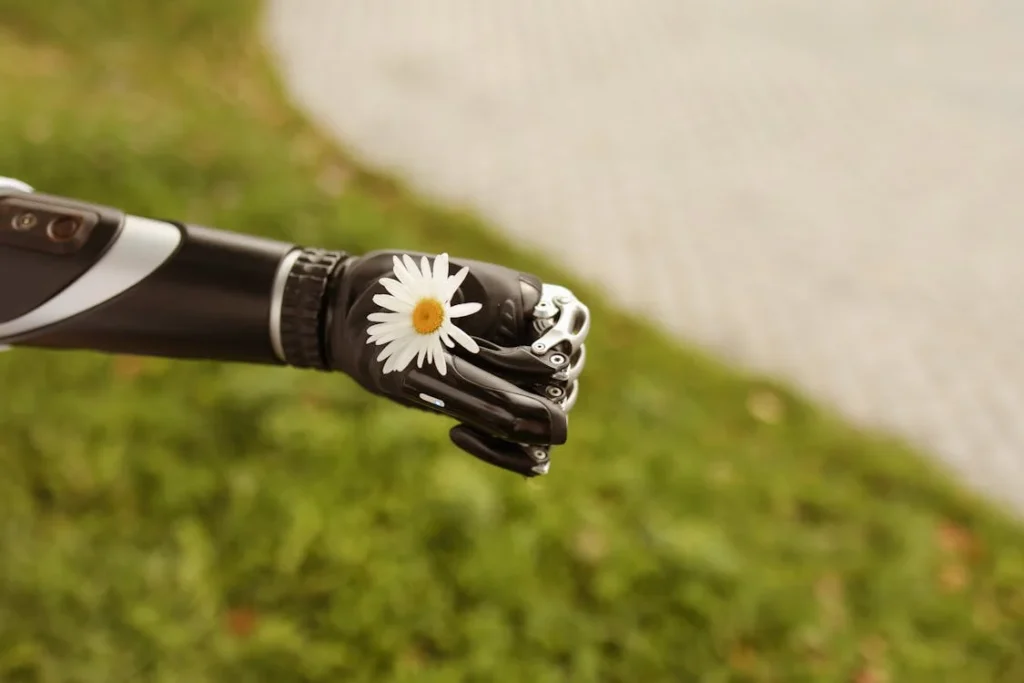
Final Thoughts: Healing Starts Before the Prosthetic
Pre-Prosthetic Therapy Is More Than Preparation — It’s a Head Start
Every journey has a beginning. In limb loss recovery, pre-prosthetic therapy is that beginning. It’s where your story of independence, strength, and new possibilities takes shape — sometimes literally.
It’s not just about muscles, joints, or bandages. It’s about giving yourself the tools to walk back into life, not just physically, but mentally and emotionally. With proper pre-prosthetic care, you don’t just use a prosthetic. You own your recovery. You build it with your effort, your patience, and your team.
The truth is, prosthetics don’t work in isolation. They rely on the strength of your residual limb, the flexibility of your body, and the confidence in your mind. Pre-prosthetic therapy gives you all three.
When people skip this step, they often struggle. When they embrace it, they thrive.
What You Can Do Right Now
If you or someone you know is preparing for prosthetic use, here’s the most important thing to remember: don’t rush the process. Healing isn’t a race. The strongest, most successful prosthetic users are the ones who took their time to prepare — who followed each step, asked questions, and worked closely with their care team.
Make sure your therapy includes the following:
- Wound care and limb shaping.
- Muscle strengthening and joint flexibility.
- Balance training and posture correction.
- Emotional support and realistic goal-setting.
- Education for both you and your caregivers.
Ask your clinic or hospital about their pre-prosthetic therapy programs. If they don’t have one, ask to be referred to a rehabilitation center that does. You deserve care that respects your full journey — not just the destination.
At Robobionics, we believe in complete care, not quick fixes. Our approach starts with strong partnerships with rehabilitation professionals and continues through to advanced prosthetic fitment and beyond.
While our bionic hand Grippy™ and other solutions are designed for precision and comfort, we know they perform best when the person using them has been supported every step of the way.
That’s why we always encourage early engagement in therapy. Because prosthetics aren’t just about technology — they’re about people. About you.
Conclusion
Pre-prosthetic therapy may feel like a long road. Some days will be easier than others. But each day you show up, each time you stretch or move or wrap your limb, you’re moving forward.
You’re not going back to who you were — you’re stepping into who you’re becoming.
And that person is strong. Prepared. Independent.
Whether you’re just beginning your journey or helping someone else on theirs, remember this: healing begins before the prosthetic is ever worn. And that healing — guided by therapy, supported by care, and driven by your courage — is what leads to success.
You’ve already taken the hardest first step. Now keep going. The rest of your life is waiting.



